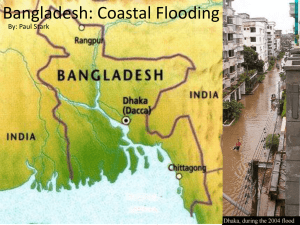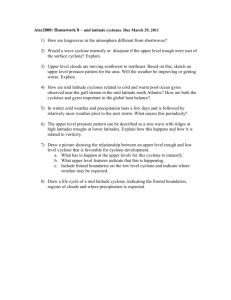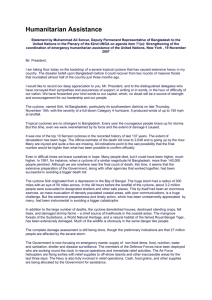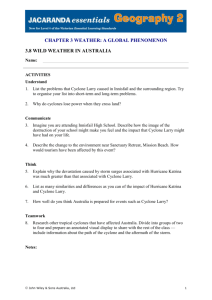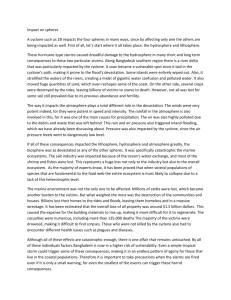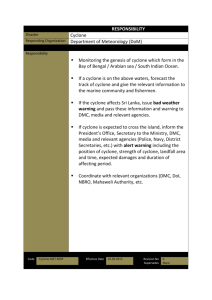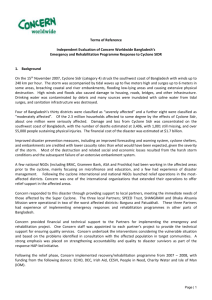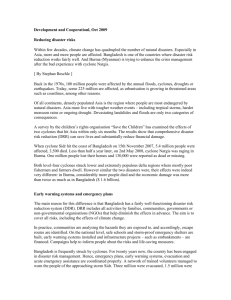Introducing The Book - Centre for Sustainable Development
advertisement
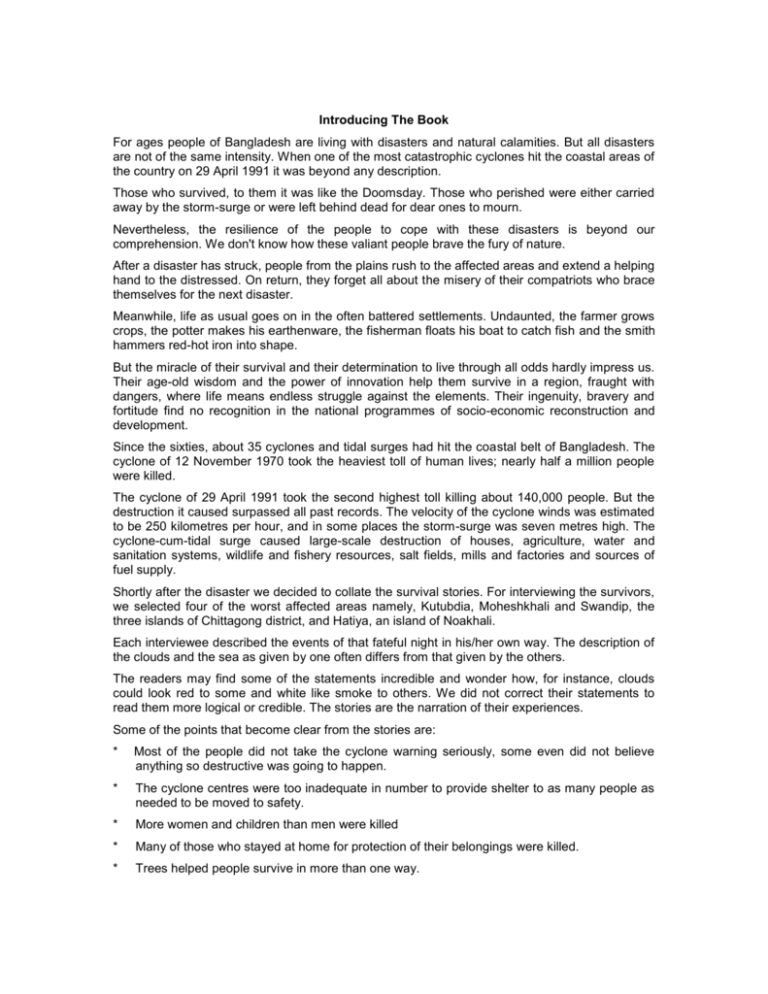
Introducing The Book For ages people of Bangladesh are living with disasters and natural calamities. But all disasters are not of the same intensity. When one of the most catastrophic cyclones hit the coastal areas of the country on 29 April 1991 it was beyond any description. Those who survived, to them it was like the Doomsday. Those who perished were either carried away by the storm-surge or were left behind dead for dear ones to mourn. Nevertheless, the resilience of the people to cope with these disasters is beyond our comprehension. We don't know how these valiant people brave the fury of nature. After a disaster has struck, people from the plains rush to the affected areas and extend a helping hand to the distressed. On return, they forget all about the misery of their compatriots who brace themselves for the next disaster. Meanwhile, life as usual goes on in the often battered settlements. Undaunted, the farmer grows crops, the potter makes his earthenware, the fisherman floats his boat to catch fish and the smith hammers red-hot iron into shape. But the miracle of their survival and their determination to live through all odds hardly impress us. Their age-old wisdom and the power of innovation help them survive in a region, fraught with dangers, where life means endless struggle against the elements. Their ingenuity, bravery and fortitude find no recognition in the national programmes of socio-economic reconstruction and development. Since the sixties, about 35 cyclones and tidal surges had hit the coastal belt of Bangladesh. The cyclone of 12 November 1970 took the heaviest toll of human lives; nearly half a million people were killed. The cyclone of 29 April 1991 took the second highest toll killing about 140,000 people. But the destruction it caused surpassed all past records. The velocity of the cyclone winds was estimated to be 250 kilometres per hour, and in some places the storm-surge was seven metres high. The cyclone-cum-tidal surge caused large-scale destruction of houses, agriculture, water and sanitation systems, wildlife and fishery resources, salt fields, mills and factories and sources of fuel supply. Shortly after the disaster we decided to collate the survival stories. For interviewing the survivors, we selected four of the worst affected areas namely, Kutubdia, Moheshkhali and Swandip, the three islands of Chittagong district, and Hatiya, an island of Noakhali. Each interviewee described the events of that fateful night in his/her own way. The description of the clouds and the sea as given by one often differs from that given by the others. The readers may find some of the statements incredible and wonder how, for instance, clouds could look red to some and white like smoke to others. We did not correct their statements to read them more logical or credible. The stories are the narration of their experiences. Some of the points that become clear from the stories are: * Most of the people did not take the cyclone warning seriously, some even did not believe anything so destructive was going to happen. * The cyclone centres were too inadequate in number to provide shelter to as many people as needed to be moved to safety. * More women and children than men were killed * Many of those who stayed at home for protection of their belongings were killed. * Trees helped people survive in more than one way. * Relief did not reach the distressed immediately after the disaster. * People in distress came to each other's help. * There was an acute shortage of drinking water following cyclone, yet many drank only safe water. * People survived through their age-old wisdom and power of innovation. It may never be possible to stop cyclones, floods and tidal waves from coming. But we can certainly minimise the sufferings of the people through disaster preparedness and an improved disaster management. Living With Cyclone is a collection of survival stories as told by the survivors. These stories remind us of the age-old adage that man can be defeated but not destroyed. With incurable optimism human beings rebuild life after every destruction. This is an English adaptation of the original Bangla version entitled 'Jharer Shange Baash' (Living With Cyclone). Mr Jawadur Rahman, despite professional preoccupations, has taken the trouble of adapting the book into English for readers abroad. Thanks are also due to Mr. S.M.A.Chowdhuri, Professor Ainun Nishat of the Bangladesh University of Engineering and Technology and Professor Shamsul Kabir of the Bangladesh Open University and other friends and well-wishers who preferred anonymity but without whose support and assistance this publication would not have been possible. November 1993 Mahfuz Ullah

